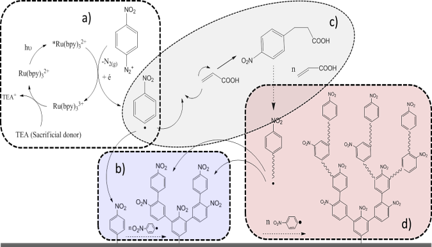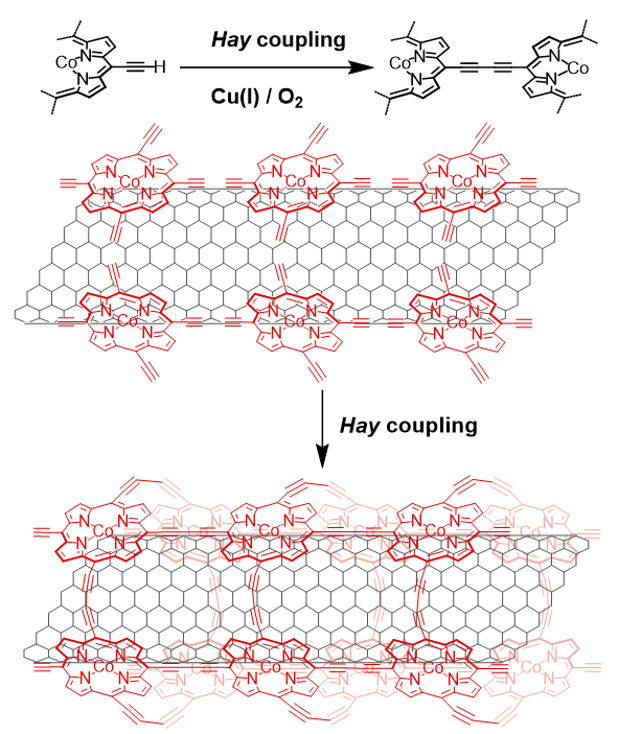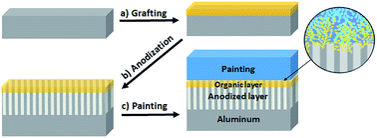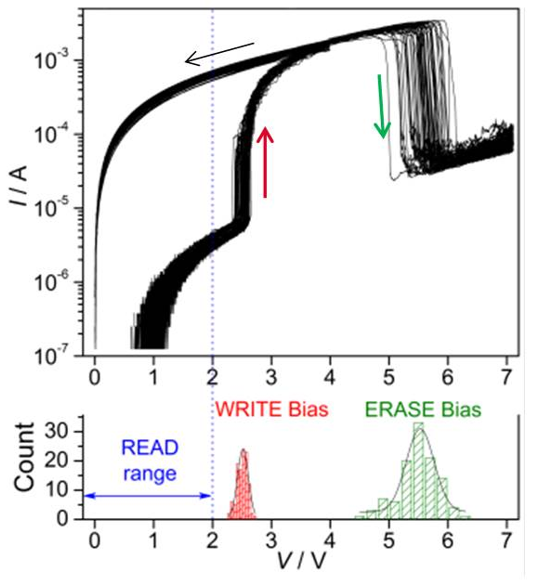


| LICSEN was founded in 2014 by merging the former LCSI (Laboratoire de Chimie des Surfaces et Interfaces) and LEM (Laboratoir d'Electronique Moléculaire), both having shared expertise in surface functionalization and nanomaterial chemistry. The ability to add new functionalities to surfaces and nanomaterials through the development of chemical functionalization processes remains at the core of many of our activities. |
|
Main contacts: Guy Deniau, Pascal Viel |
Diazonium-based surface functionalization: - SEEP (Surface Electroinitiated Emulsion Polymerization) : a process for the electrografting of vinylic polymers on conducting surfaces - GRAFTFAST® : a process for the grafting of polymers on surfaces by chemical reduction of diazonium salts. These processes and their optimizations/evolutions are used in different projects such as: antibacterial surfaces, medical implants modifications (see the Bio/Health topic), anti-corrosion primers, printed electronics, organic electronics (see below), etc. Further reading: Diazonium salts induced anchoring process : mechanism, application(s) (PhD thesis of A. Mesnage 2011) |
|
Main contact : Stéphane Campidelli |
Chemistry of carbon nanontubes : The fabrication of functional hybrid materials that preserves and combines the properties of their building blocks is a central issue of nanosciences. Among the different classes of nanomaterials, carbon nanotubes and graphene constitute a class of materials exhibiting exceptional mechanical and electronic properties and were also found to be promising candidates for composites, electronic, sensing, energy conversion and biomedical applications. However, fabrication of nanotube or graphene-based molecular assemblies is still limited because of the difficulty to incorporate highly engineered molecules on the nanotube surfaces. This problematic issue can have mainly two origins: incompatibility between the functionality on the molecules and the conditions required for nanotube functionalization and/or the fact that nanotube functionalization requires a large excess of reagent that is difficult or impossible to recycle. In this context, we work on the chemistry of carbon-based nanomaterials and we develop innovative functionalization methods for these materials. Carbon Nanotube-Templated Synthesis of Covalent Porphyrin Network for Oxygen Reduction Reaction, J. Am. Chem. Soc. (2014) / Functionalization of Carbon Nanotubes through Polymerization in Micelles: A Bridge between the Covalent and Noncovalent Methods, Chem. Mater. (2013) |
|
Main contact : Guy Deniau, Renaud Cornut |
Chromium-free anticorrosion primers : As part of the ANR LabCom Mestrel project (2017-2019) with the SME PROTEC-Industrie, we aim to replace CrVI treatments on metals, which are highly carcinogenic and soon to be banned (Reach), with thin, robust organic coatings derived from green chemistry. These coatings must fulfill two essential functions: adhesion primer for paint and anti-corrosion. We have recently achieved excellent results in these two functions, enabling our coatings to pass even the most stringent standardized aerospace industry tests. We have also succeeded in developing new study protocols using Scanning Electrochemical Microscopy (SECM) to rapidly obtain, in the laboratory, a reliable prediction of coating quality in terms of adhesion and anticorrosion. This original approach avoids the time-consuming results of standardized tests, considerably speeding up the development of new coatings. Further reading: Un primaire d’adhésion avant peinture, sans chrome VI, pour l'aéronautique (Fait-Marquant IRAMIS 2017 in French) / Bifunctional coatings: coupling an organic adhesion promoter with an anticorrosion inorganic layer, RSC Advances (2019) |
|
Main contacts: Bruno Jousselme, Vincent Derycke |
Electrografted organic ultrathin films as Nanodielectrics : We have developed the electro-grafting of thin, robust molecular films directly onto electrodes and their integration into functional devices. These films make it possible to study electronic transport in a range of inter-electrode distances (3-20nm) intermediate between that of molecular electronics based on self-assembled monolayers (SAMs) and that of organic electronics based on thicker films, while meeting the major challenge of robustness. Taking advantage of the wide choice of graftable compounds, we have studied the properties of compact, insulating organic films and demonstrated their performance as thin, hydrophobic organic gate dielectrics in transistors. Organic electrografted thin films based nano-devices (PhD thesis of F. Lebon, 2019) / Electrochimica Acta (2019) / J. Phys. Chem. C (2016) |
|
Main contacts: Vincent Derycke, Bruno Jousselme |
Electrografted ultrathin films as active layers in organic memrory devices and circuits : We have introduced robust, fastly programmable, nonvolatile organic memristive nanodevices based on electrografted redox complexes that implement synapses thanks to a wide range of accessible intermediate conductivity states. In tight collaboartion with IEF-Orsay (J-O. Klein and co-workers), we have demonstrated experimentally an elementary neural network, capable of learning functions, which combines four pairs of organic memristors as synapses and conventional electronics as neurons. Our architecture is highly resilient to issues caused by imperfect devices. It tolerates inter-device variability and an adaptable learning rule offers immunity against asymmetries in device switching. Scientific Reports (2016) / Fait Marquant IRAMIS 2016 (in French) / Electro-grafted organic memristors as nanosynapses for neuro inspired circuits (PhD thesis of T. Cabaret, 2014) |
|
Main contacts: Pascal Viel, Fanny Hauquier |
Flexible printed copper electronics : The laboratory combines its expertise in printing (2D, 3D) and surface functionalization (particularly for metallizing plastics) to develop innovative processes for flexible printed electronics. These copper-based processes do not use nanoparticles. Further reading: Polymer Grafting by Inkjet Printing: A Direct Chemical Writing Toolset. Adv. Funct. Mater. (2013) / Développement par procédé d'impression jet d'encre de composants électroniques métalliques souples (Thèse de G. Barral 2019) / Alternative Photonic Sintering for Inkjet Copper Inks (ANR project 2016-2020) |
•  Institut Rayonnement Matière de Saclay
Institut Rayonnement Matière de Saclay
• Laboratoire d'Innovation en Chimie des Surfaces et Nanosciences (LICSEN)











